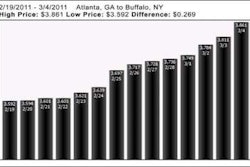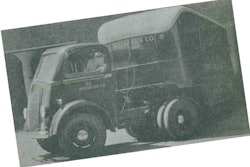NASSTRAC, an industry association that represents the interests of freight shippers in all modes of transportation, urged the Federal Motor Carrier Safety Administration to preserve the current hours-of-service rules, which the group says have improved the trucking industry’s safety performance significantly. On Friday, March 4, NASSTRAC submitted its comments on FMCSA’s proposed changes to the rules jointly with The Health and Personal Care Logistics Conference.
The current hours-of-service rules, which have been in effect since January 2004, made four primary changes to the regulations then in place: increasing the daily driving limit from 10 hours to 11 hours; increasing the required minimum daily rest from 8 hours to 10 hours; decreasing the number of hours on duty after which a driver may not operate a commercial motor vehicle from 15 hours to 14 hours; and allowing a driver to “reset” the weekly 60 or 70-hour on duty limits with 34 consecutive hours off duty. Under the current proposal, FMCSA is, among other changes, considering whether to reduce the daily driving limit from 11 hours to 10 hours and has proposed to limit the 34-hour restart provision by requiring that it include two periods from midnight to 6 a.m. and limiting its use to once per week.
In its filing, NASSTRAC stated that the proposed changes put forth by FMCSA would have an extremely negative impact on over-the-road transportation and would cripple supply chain operations of its members severely. “Shippers and carriers alike feel that FMCSA should not adopt significant changes in rules that are working unless the benefits clearly and substantially outweigh the inevitable costs and burdens of further modifications of the rules,” says John Cutler, NASSTRAC’s legal counsel. “Clearly, that standard has not been met here.” Cutler says the current rules have served both safety interests and economic interests effectively.
NASSTRAC say sit continues to support the current HOS rules that were adopted in 2003, and that these rules have helped to reduce truck-related crash fatalities by 33 percent and truck-related crash injuries by 39 percent. “Highway travel overall is safer, and the trucking industry’s safety record has been particularly praiseworthy in recent years,” Cutler says. “That being said, implementing the current rules has not come without costs and burdens for motor carriers and as well as shippers. If hours-of-service regulation is not done right, it will hurt the trucking industry, shipping customers and the economy in general. Therefore, it’s critical that the FMCSA avoid unnecessary, uncalled-for and unwise regulation.”
NASSTRAC’s filing argues that, under the proposed rules, the trucking industry would need to secure 180,000 additional drivers and trucks to maintain current service levels. “Today, freight volumes are up, and the driver shortage is even worse than ever,” Cutler says. “By its own admission, FMCSA says the number of truck-related accidents is declining. However, the agency says the rate is still highly unacceptable, yet admits that the source of the decline is unclear. FMCA also admits that it is not sure whether it should reduce maximum driving time to 10 hours (reduced by mandated breaks) or keep the limit at 11 hours (but mandate breaks). The reality is that other aspects of these proposed changes make them all unacceptable.”
Brian Everett, NASSTRAC’s executive director, says FMCSA needs to understand that his group, like many others in the transportation industry, is concerned about excessive regulatory costs and burdens. “Unfortunately, FMCSA seems to view the purpose of drivers as being to simply drive miles rather than to deliver raw materials to factories and finished goods to consumers,” Everett says. “Indeed, the agency’s thinking seems to be that truck drivers are like brick layers building walls. At the end of the day, if the job isn’t finished, the brick layer can simply leave the wall partially finished and come back after a good night’s sleep to pick up where the project was left off. Truck drivers cannot operate this way. It’s critical that hours-of-service regulation address the realities of over-the-road trucking and the needs of the marketplace.”














